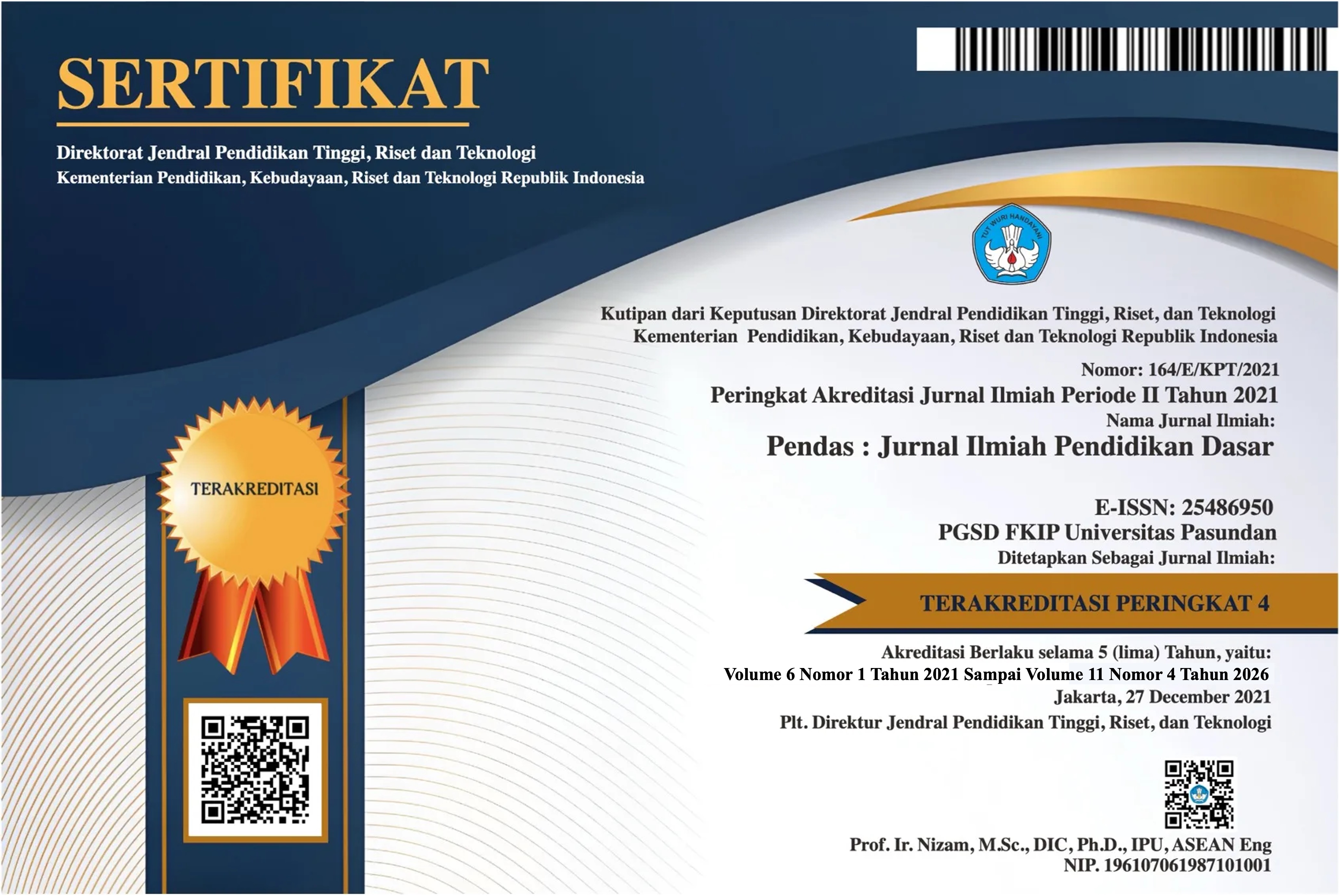PENGINTEGRASIAN AJARAN TRI NGA MELALUI PEMBELAJARAN SBDP SUB SENI MUSIK SEBAGAI PENANAMAN KARAKTER BUDAYA BAIK DI SDN 2 WALUYO
DOI:
https://doi.org/10.23969/jp.v9i2.13293Keywords:
tri nga, character education, musical artsAbstract
Ki Hadjar Dewantara's thoughts on education have become a distinctive image for the history of education in Indonesia. Ki Hadjar Dewantara's educational concept displays the uniqueness of Indonesian culture. One of Ki Hadjar's teaching methods is Tri Nga (understand, feel and act). Furthermore, Ki Hadjar Dewantara said, what is called "budipekerti" or character or in foreign languages is called "character", namely "the completeness of the human soul" as a soul that is "based on spiritual law". People who have moral intelligence always think and feel and always use certain and constant measurements, scales and basics. Recognizing the character of the students we care for is an important aspect of the quality of human resources, because the quality of national character determines the progress of a nation. Character education can be integrated through all subjects, including SBdP learning, the music sub-material. Art lessons are an educational medium to shape students' good cultural character through artistic activities. This research aims to determine the integration of the Tri Nga teaching method (Ngerti,Ngroso,Nglakoni) in learning the art of music to instill good character at SDN 2 Waluyo. This research uses a qualitative approach. The data collection techniques used were observation, interviews and documentation. Data analysis techniques through data reduction, data presentation, drawing conclusions. The results of this research show that integrating Tri Nga teachings in learning the art of music can improve the education of good cultural character.
Downloads
References
Depdiknas. (2003). Undang-undang RI No.20 tahun 2003 tentang Sistem Pendidikan Nasional. http://pics.unipma.ac.id/content/pengumuman/03103_30_05_2022_09_16_55TAHUN%202007%20UU%20KUP%20NO%2028.pdf
Dewantara, K. H., & E-Mail, S. (2011). Deskripsi Kualitatif Sebagai Satu Metode Dalam Penelitian Pertunjukan. Harmonia: Journal Of Arts Research And Education, 11(2), 173–179. Https://Doi.Org/10.15294/Harmonia.V11i2.2210
Multidimensional, Jakarta: Bumi Aksara.
Muslich, fiMasnur. 2011. Pendidikan Karakter Menjawab Tantangan Krisis
Mutaqqin, IA,dkk. (2021). ANALISIS NILAI-NILAI PENDIDIKAN KARAKTER DALAM NOVEL GURU AINI KARYA ANDREA HIRATA. Jurnal INCARE : International Jounal of Education Resources.1(6). https://doi.org/10.59689/incare.v1i6.212
Nurhidayati, Ika. (2020). PEMBELAJARAN SENI TARI BERBASIS KEARIFAN LOKAL DALAM PENINGKATAN PENDIDIKAN KARAKTER SISWA SEKOLAH DASAR. Jurnal Elementary. https://doi.org/10.31764/elementary.v1i2.549
Nurmawati, A. dkk. (2022) Implementasi Ajaran Tamansiswa Tri Nga Melalui Model Pembelajaran Discovery Learning Dalam Pembelajaran IPA Kelas IV Sekolah Dasar. TRIHAYU: Jurnal Pendidikan Ke-SD-An, 8(2), 1366–1372.
Putri,RN. (2019). Penerapan Ajaran Tri-Nga Untuk Meningkatkan Karakter Pada PAUD dalam PROSIDING SEMINAR NASIONAL Penguatan Karakter Berbasis Literasi Ajaran Tamansiswa Menghadapi Revolusi Industri 4.0. https://jurnal.ustjogja.ac.id/index.php/semnasmp/article/view/5568
Sofyan, A., & Susetyo, B. (2018). PENANAMAN NILAI KARAKTER MELALUI PEMBELAJARAN SENI MUSIK DI SMP NEGERI 2 SEMARANG. Jurnal Seni Musik, 6(2). https://doi.org/10.15294/jsm.v6i2.18593
Sugiyono, 2017. Metode Penelitian Kuantitatif, Kualitatif, dan R&D. Bandung:CV. Alfabeta.
Sukri, S., Handayani, T., & Tinus, A. (2016). ANALISIS KONSEP PEMIKIRAN KI HAJAR DEWANTARA DALAM PERSPEKTIF PENDIDIKAN KARAKTER. Jurnal Civic Hukum, 1(1), 33–41. https://doi.org/10.22219/jch.v1i1.10460
Downloads
Published
Issue
Section
License
Copyright (c) 2024 Pendas : Jurnal Ilmiah Pendidikan Dasar

This work is licensed under a Creative Commons Attribution 4.0 International License.



















